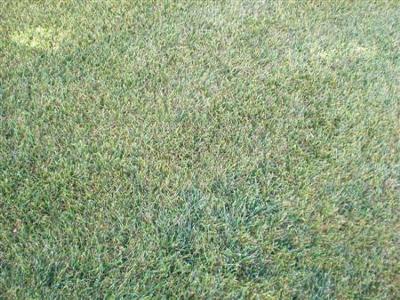
Lawn infected with a rust disease



QUESTION: (Fall 2011) We have a 3yr old established sod lawn. Every time we mow we have orange dust on our mower, and orange shoes and our white dog has orange, itchy feet and legs every time she plays on the lawn. We use lime on it and are always pet-friendly products. What is it and what do we do about it? HELP!!!
ANSWER: It sounds like your lawn has a severe case of rust, a disease that is caused by a fungus. The “orange dust” is fungal spores. The pictures above show pustules on grass leaves that contain the spores.
The spores might be causing your dog to itch…allergic reaction? I’m not sure. You should probably talk to a veterinarian about that.
Pet-friendly fertilizers are fine, just make sure you are supplying enough nutrients to keep your grass healthy. Lime should only be applied according to the results of soil tests.
Rust is very common on Kentucky bluegrass. I see it a lot this time of year (fall and early spring) in shady areas and where the grass is growing slowly. Some conditions that favor rust development are cool temperatures, low fertility, shade, and drought stress.
This disease will eventually run its course. Help your lawn outgrow it by fertilizing with nitrogen and watering. Mow, bag, and dispose of grass clippings to eliminate the source of the infection (the spores).
The best way to prevent another outbreak is to follow good lawn care practices, including: watering deep and infrequently, mowing at the proper height and fertilizing at the right time and rate.
Have your soil tested and apply nitrogen, potassium, phosphorus, and lime according to the recommendations.
Core aerate at least once a year and over-seed with blends and mixtures of multiple grass species and/or varieties — for example, mixtures of bluegrass, perennial ryegrass and creeping red fescue.
